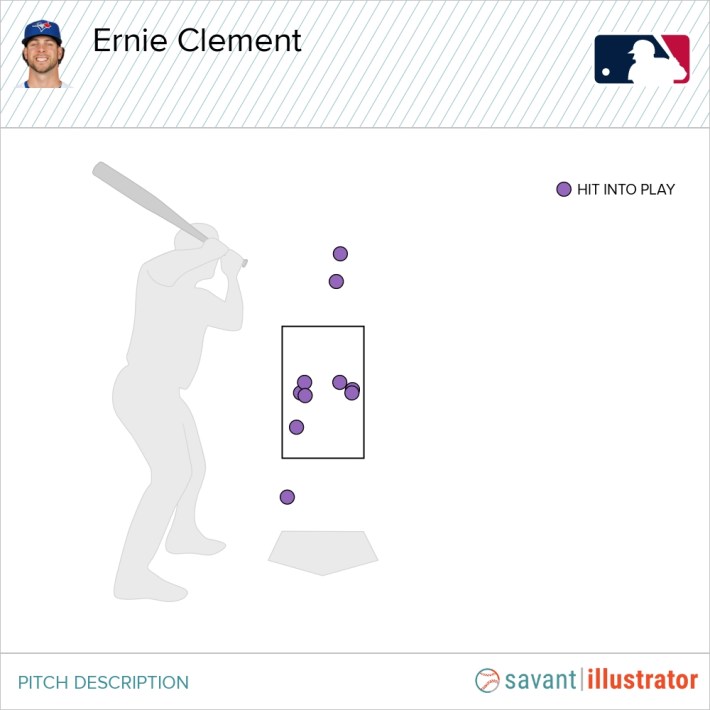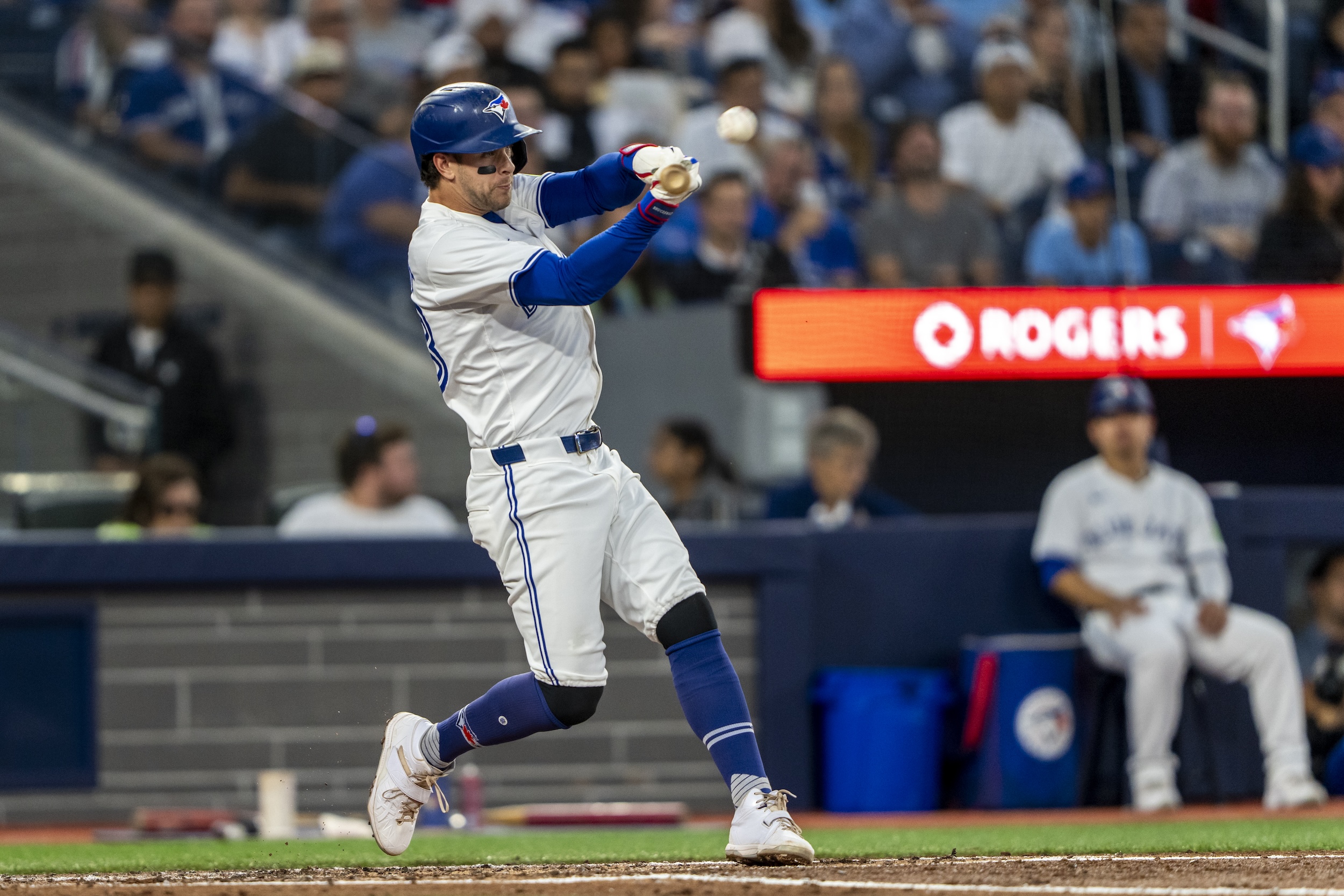They would like for you to believe that good hitting, in the sport of baseball, means being disciplined about which pitches to swing at and which ones to ignore. They advise you not to "chase"; they want you to only swing at pitches "in the zone." No, it's worse even than that: They want you really to only swing at pitches in a little inner part of the zone—the middle middle—unless the count of balls and strikes forces you to become defensive, like a hockey goalie. And who are they? Scolds! Nerds! Killjoys! To these freaks it is bad and wrong to take a mighty overhead log-splitting hack at a fastball headed for the backstop, even though everyone else agrees that this kicks ass and is extremely cool.
Where would Nationals all-star shortstop C.J. Abrams be today if he'd listened to the advice of these baseball wet blankets? Yes, sure, if he were not in the league's ninth percentile in chase percentage he would probably be hitting better than .246 on the season. And yes, fine, have it your way: 17 of Abrams's 18 home runs on the season have been on pitches inside the strike zone. But see how you have trapped yourself, like a Wookie in an Ewok's rope net, by reaching too eagerly for the low, uhh, impaled meat of statistical reasoning. For that is exactly the point: Numbers tell us that if C.J. Abrams shared your disregard for pitches that cross the plate at more than four feet of altitude, he would never have taken a furious rip at an eyeball-high Hayden Birdsong sinker, and therefore would have one fewer dinger on the season:
This Birdsong fastball, at 4.42 feet of altitude, was for a while the highest pitch hit for a dinger in 2024, and the fourth highest in the Statcast era, per Sarah Langs. "I have no idea how he hit that ball. Good for him," Birdsong said after the game. "But not that many people are hitting that ball."
Even Abrams wasn't sure what happened. "I was confused about why I swung," he said of his improbable dinger, per MASN Sports. "But I was happy I did."
Abrams's place atop this particular leaderboard lasted just about two weeks. In the second inning of a Thursday night contest notable for mattering not at all to the season around it, pitcher Mike Baumann of the Los Angeles Angels missed high on a 1–2 fastball against Ernie Clement of the Toronto Blue Jays. This was meant to be chase bait, but at the height it was thrown most people would've considered it non-competitive, a wasted effort. Just as catcher Matt Thais lunged to keep the ball from striking the home plate umpire in the forehead (or possibly from sailing straight into the protective netting of the backstop), Clement took a truly inspired chop at it, somehow connected with the barrel of his bat, and socked the ball out to left field:
“I’ve never seen that before,” admitted Blue Jays manager John Schneider. “I basically just said 'Holy shit' with everyone else in the dugout."
"I probably shouldn't be swinging at pitches like that one," acknowledged Clement after the game. To which I say: Says who? Clement—whom Statcast places in MLB's second percentile in chase percentage, and also in hard hit percentage, and in the first percentile in walk rate—should recite to himself the extremely wise and true Wayne Gretzky quote about missing 100 percent of the shots you don't take. Translated into baseball-ese, this means that you fail to smoke mondo dingers on 100 percent of the pitches you don't swing at. Yes, even ones that are an astonishing 4.6 feet off the ground.

Hard as it may be to believe, Clement's heroic dinger is still shy of the record for highest pitch hit for a home run in the Statcast era. Back in 2022, Kyle Higashioka socked a dinger on a pitch that was just about one inch higher than Clement's at the moment of contact. But where Clement socked his absurd homer against a pitch traveling 97 miles per hour, Higashioka, then with the New York Yankees, took his eccentric and historic rip against a ball moving only about a third as fast.
The Yankees were clobbering the absolute bejesus out of the Chicago Cubs on June 12, in the final game of a New York sweep. In the eighth inning, with his team already down 17–4, then-Cubs manager David Ross elected to use journeyman utility schmo Frank Schwindel as his pitcher, in order to save the arms of his pitching staff. This was the second of three career appearances on the mound for Schwindel, all from that season, all in blowout losses. Schwindel, as a pitcher, did not have what anyone would consider The Juice. The fastest pitch he threw in that inning of work came in at about 53 miles per hour; MLB considers every single one of his six offerings against the Yankees to have been an eephus. The first of these, to Higashioka, floated toward home at just 35 miles per hour.
Higashioka, who'd already socked one dinger in the game, was ready for this night to be over; at any rate he did not feel that he would need to be very discerning about swinging at one of these wind-blown soap-bubbles. "That was pretty funny," he admitted afterward. "Someone once told me, the key to hitting a knuckleball is, 'Stay back, stay back, stay back.' So that’s what I was trying to do there. I saw it come in and was like, 'Yeah, I can hit that.'" And hit it he did: The ball dropped in there at about neck height, and Higashioka smoked it out to left:
Distribute your admiration as you will. Maybe Clement had a harder job getting his barrel to a 97-mph pitch at forehead height, or maybe Higashioka had to do much more to supply exit velocity on a pitch traveling almost straight downward at the point of contact. To this day, Schwindel's eephus to Higashioka is both the highest and the slowest pitch to have been hit for a home run in the Statcast era, per MLB. Put that in your pipe and smoke it, hidebound pipe-smoking baseball optimizers! You simply cannot etch your name into the record books in this way if you aren't prepared to take some risks.






